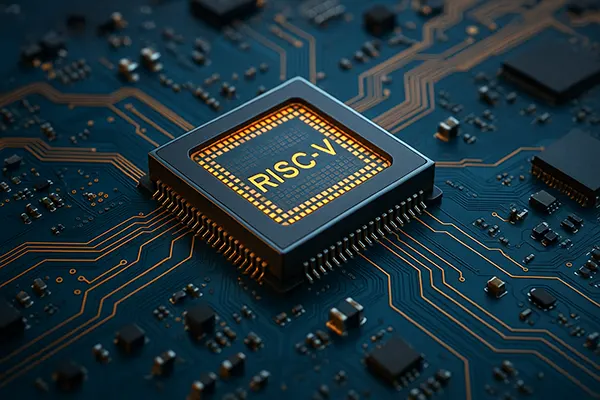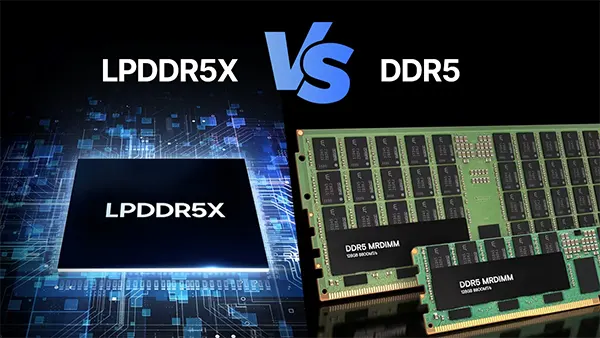
RISC-V Chips: Can Open Architecture Rival x86 and ARM?
In the ever-evolving world of semiconductor technology, a quiet revolution is brewing — and it wears the name RISC-V. With global tech giants turning their attention to open instruction set architectures, the question arises: can RISC-V become a true contender against the long-standing dominance of x86 and ARM in the processor ecosystem?
The Rise of RISC-V and Its Technological Foundation
RISC-V (Reduced Instruction Set Computer – Five) is an open-source instruction set architecture (ISA) developed at the University of California, Berkeley. Unlike proprietary ISAs such as x86 (Intel/AMD) and ARM (Arm Holdings), RISC-V offers complete openness and flexibility, allowing chip designers to create custom processors without paying licensing fees or complying with restrictive agreements.
The simplicity of RISC-V’s modular structure makes it attractive for a wide range of devices — from microcontrollers in IoT to high-performance computing in data centres. Its clean-slate design enables low power consumption and efficient performance scaling, which is crucial in an era dominated by energy-efficient computing.
By 2025, major semiconductor firms such as SiFive, Alibaba’s T-Head, and even Western tech players like Qualcomm and Intel have either announced or released products based on RISC-V. The ecosystem is expanding rapidly, bolstered by support from academic institutions, startups, and governmental initiatives — especially in Asia and Europe.
How RISC-V Challenges Traditional Market Structures
Historically, the microprocessor market has been shaped by two dominant architectures: x86 in personal computing and servers, and ARM in mobile and embedded systems. These ecosystems have been developed over decades with robust software support, proprietary optimisation, and widespread industry adoption.
RISC-V, however, offers an entirely new value proposition: an open, adaptable, and collaborative framework. This makes it particularly appealing in geopolitically sensitive contexts where avoiding reliance on US-based IP providers is seen as a strategic advantage.
While x86 remains unrivalled in legacy desktop applications and ARM maintains a stronghold in smartphones, RISC-V’s growth is happening in adjacent areas: AI edge devices, automotive controllers, and custom accelerators. These niche markets provide fertile ground for the architecture’s expansion.
Barriers to Adoption and the Software Ecosystem Gap
Despite growing enthusiasm, RISC-V still faces significant challenges — most notably, the maturity of its software ecosystem. Unlike x86 and ARM, which enjoy decades of compiler optimisation, OS support, and driver development, RISC-V is still catching up in critical software infrastructure.
Although Linux and FreeBSD now run on RISC-V, support for mainstream consumer operating systems and applications remains limited. Developer tools and SDKs are improving, but they lag behind the comprehensive environments available for ARM and x86. This creates friction for developers transitioning to RISC-V platforms.
Furthermore, commercial adoption is limited by concerns over ecosystem fragmentation. Since anyone can customise the RISC-V ISA, ensuring cross-compatibility between processors becomes complex. This requires industry-wide cooperation, which is still in the early stages of standardisation.
The Road to Software Parity
Several consortiums, such as RISC-V International and the Linux Foundation, are actively working to build a robust software stack. Investments in compilers (LLVM, GCC), virtualisation, and security features aim to bring RISC-V to parity with more established architectures.
Open-source communities play a vital role. Collaborative projects are refining RISC-V-specific kernels, drivers, and development tools. Initiatives like OpenHW Group provide reference designs and compliance suites that support ecosystem stability.
By February 2025, significant progress has been made in supporting Android on RISC-V and introducing major AI and ML libraries into compatible environments. While still maturing, these developments signal growing confidence from both developers and manufacturers.

Global Adoption Trends and the Strategic Future of RISC-V
From a geopolitical and economic standpoint, RISC-V aligns with increasing calls for digital sovereignty. Countries like China, India, and Germany see in RISC-V an opportunity to reduce reliance on foreign-controlled technologies and to foster domestic semiconductor ecosystems.
China, in particular, has made major investments in RISC-V development, integrating it into education, government-backed research, and commercial products. Similar support is emerging in Europe through initiatives like the European Processor Initiative (EPI), which seeks to develop RISC-V based HPC solutions.
Tech companies in the US, while more cautious due to existing x86 and ARM investments, have begun hedging their bets. Intel’s foundry services now offer RISC-V IP, while NVIDIA and Google are contributing to its ecosystem through tools and research collaborations.
RISC-V as a Strategic Asset in the Semiconductor Race
In an increasingly multipolar tech world, open architectures like RISC-V offer flexibility, cost-efficiency, and political neutrality. These features are becoming more valuable in global competition over semiconductor leadership and supply chain independence.
For emerging markets, RISC-V provides a pathway to enter the chip design space without the financial and legal constraints imposed by proprietary ISAs. It is not just a technological shift but also a philosophical one — advocating openness and innovation over exclusivity and licensing.
By 2025, RISC-V is not yet a direct replacement for x86 or ARM across all domains, but it is carving out an essential and growing role. Its future depends on continued collaboration, standardisation, and real-world deployments that demonstrate its potential beyond academic and experimental use.




